Affiliate links on Android Authority may earn us a commission. Learn more.
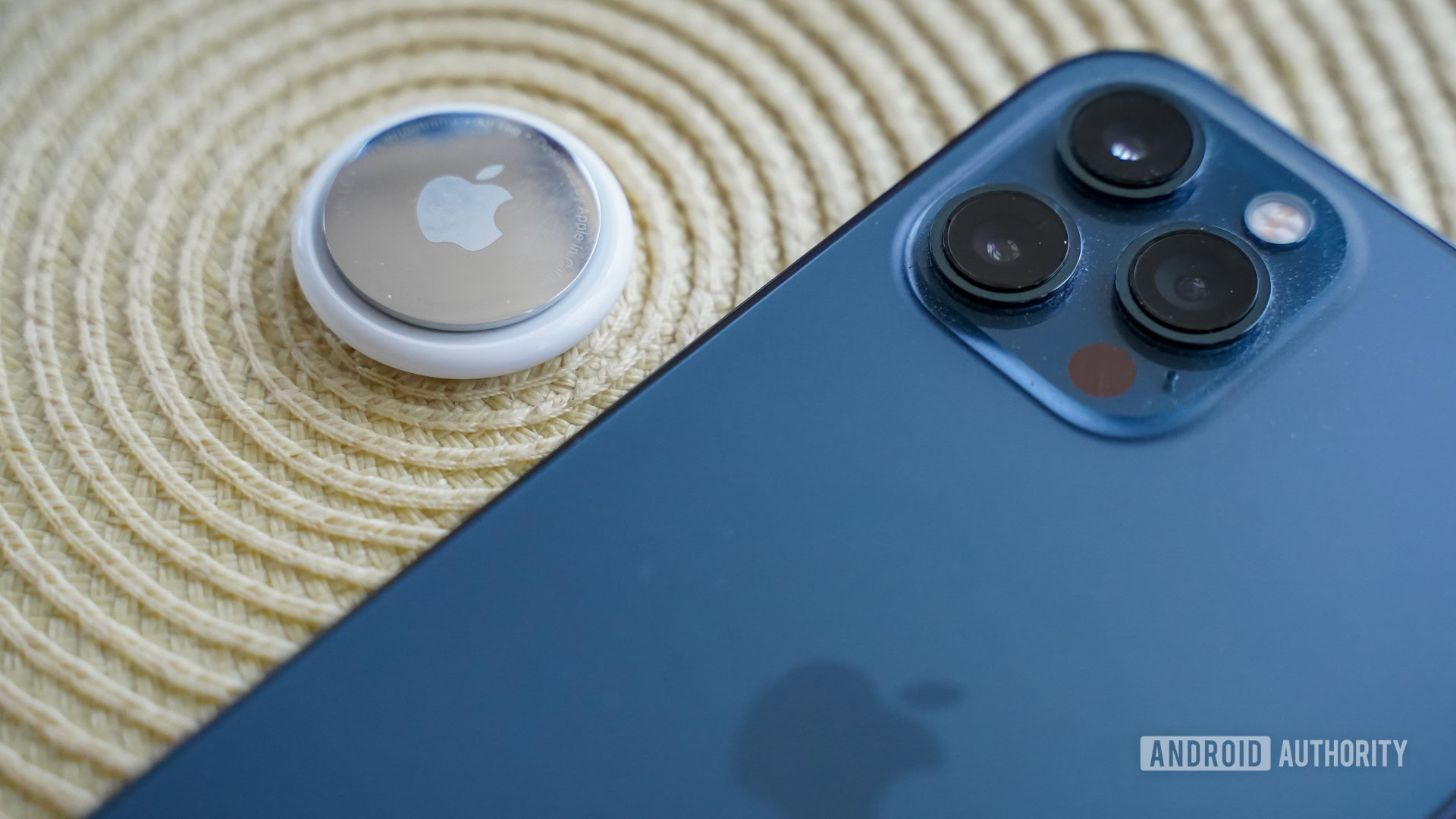


Apple AirTag
What we like
What we don't like

Apple AirTag
Everyone’s lost something at one point or another. Nothing quite matches that frantic feeling of scouring through your couch, nightstand, or car for something that was there just a moment ago. What if you could find your lost stuff easily and precisely with your smartphone? An entire industry has sprung into action for this very scenario and several device makers, including Tile and Samsung, have created smart tags for help locating things. Apple saw a market ripe for entry and dove in headfirst with its AirTags. Find out if they beat the competition in the Android Authority‘s Apple AirTag review.
What you need to know about the Apple AirTag
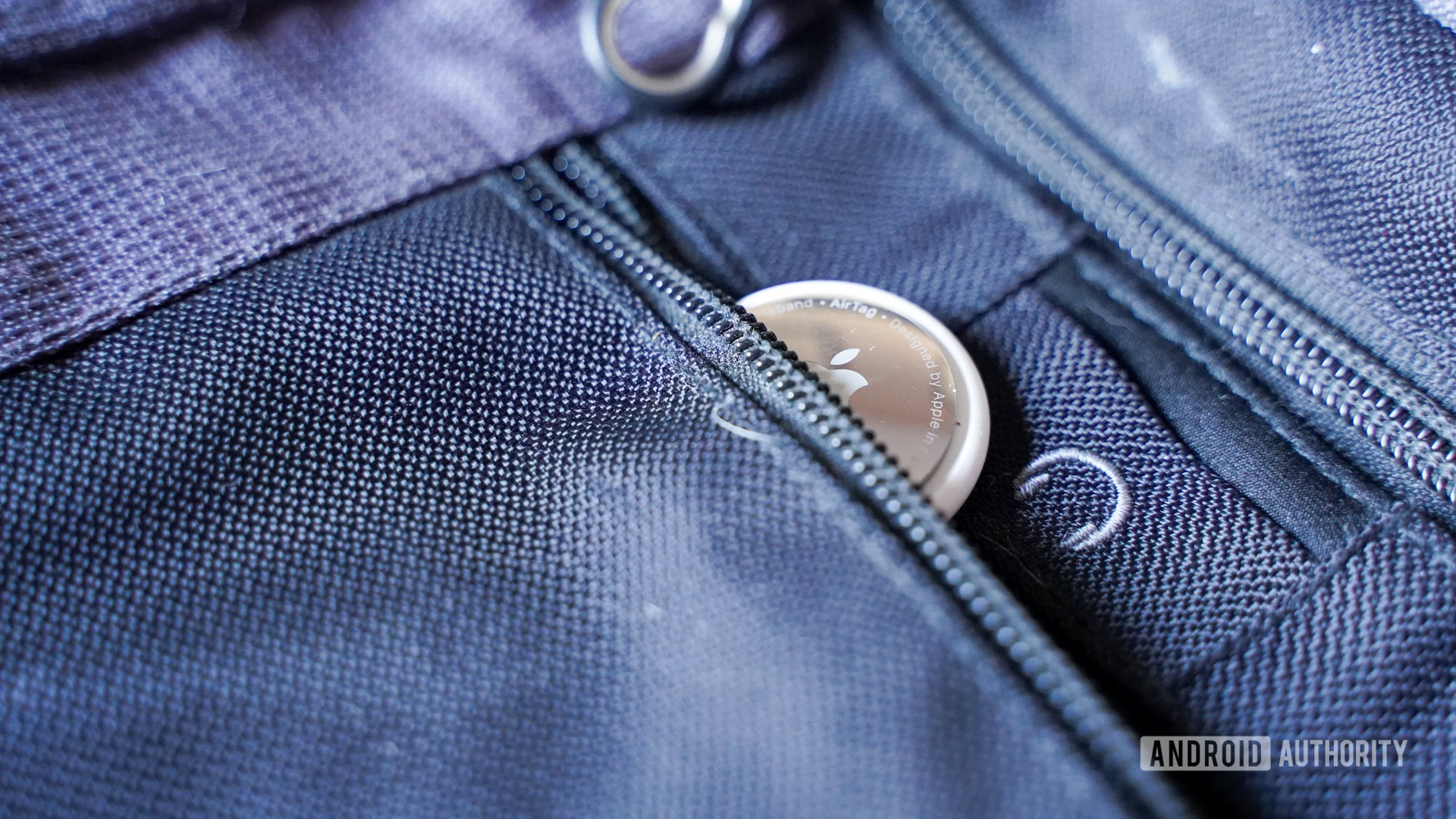
- Apple AirTag (1-pack): $29/£29/€29
- Apple AirTag (4-pack): $99/£99/€99
Apple AirTags join similar trackers in the market, including Tile tags and Samsung Galaxy SmartTags. The idea is simple: attach the tag to something you often lose and then find it easily through an app on your phone. The catch is that AirTags only work with iPhones.
AirTags are available in packs of 1 or 4. A single tag costs $29, and the 4-pack costs $99. The only color option is white with a silver backing. If you order directly from Apple, you can have tags personalized via engraving. Of course, Apple and others sell myriad accessories (like keychain holders) to otherwise personalize AirTags.
Just how easy are AirTags to use, and what about privacy? We answer these questions and more below.
How’s the design?
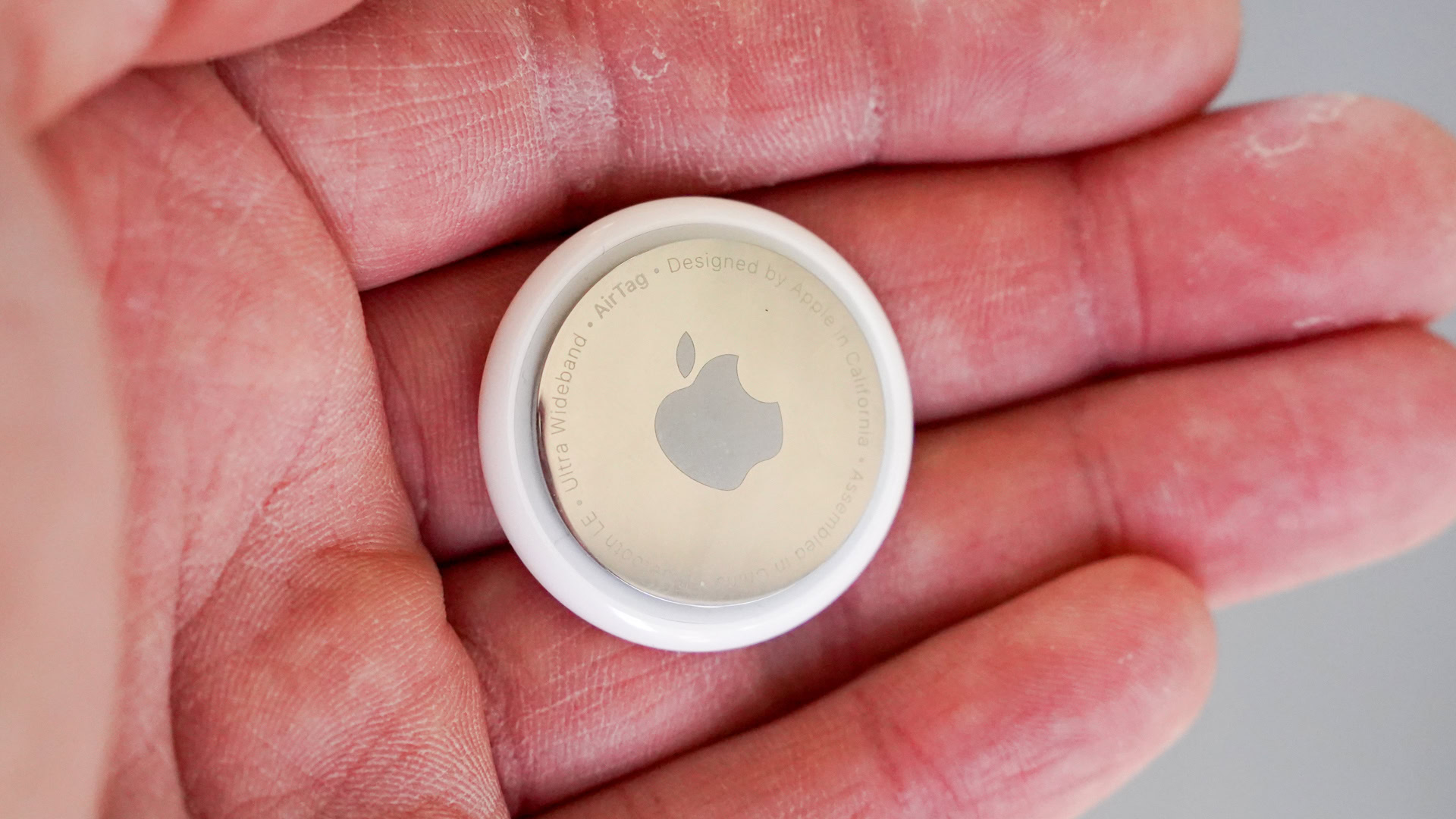
Each Apple AirTag is about the size of three 50 cent pieces (32mm) stacked together. It’s smoother, of course, and sort of resembles a miniature flying saucer. It’s built of hard white plastic on one side, and chrome-like metal on the other. The design is simple and elegant.
We’d call materials and build quality solid. The tags are IP67 water-resistant, so they can be dropped in a puddle or otherwise splashed and not lose effectiveness. Replacing the inexpensive and easy-to-find CR2032 battery — rated to last a year — is as simple as rotating the chrome cap counter-clockwise to loosen the cover. You can also use this technique to silence an AirTag that won’t shut up.
The AirTag design is simple and elegant, but there's one major flaw.
There’s one major design flaw, however: there’s no way to attach the tags directly to anything without an additional accessory.
There’s no room for a keyring on the AirTag, which means you have to use one of Apple’s pricey, optional keyring holders (which start at $29 and range to an eye-watering $449 for Hermès offerings) to strap it to anything, or else hunt down cheaper third-party alternatives. This is a pure money grab from a company that already has more money than God.
You don’t make a thing to find other things and then not make it possible to attach it to those things. C’mon, Apple.
How do AirTags work?
AirTags could not be easier to use. In fact, they might be too easy. Wake your iPhone, bring a tag near it, tap a couple of settings buttons, and bingo, they’re paired. It takes mere seconds. Attach the tag to whatever you want to track, and you’re all set.
Location tracking can be ridiculously precise, thanks to multiple technologies. There’s Bluetooth, ultra-wideband, and Apple’s Find My network, which is created by the 1 billion-plus iOS devices out in the world.
When you’re in your home, it’s the first two that allow for precision. Using the Find My app, you can initiate a search for a lost item and make it emit an audible chirp. The chirp is loud enough (60dB) to hear in a quiet setting. In testing, we were able to find an AirTag hidden in various places around a house in just moments. It also works with Siri on your phone, Apple Watch, iPad, or HomePod. Just say, “Hey, Siri, find my keys,” and Siri will automatically ping the associated AirTag.
If you have a newer iPhone (11, 12, 13, or 14 series), the Find My app will use ultra-wideband to give you a distance and direction in a feature Apple calls Precision Finding. This helps if you can’t initially hear the AirTag beeping, and your iPhone will additionally offer haptic feedback. You have to be within 15 to 30 feet for Precision Finding to operate.
If you’ve misplaced something by several miles, rather than several rooms, it’s the broader Find My network that kicks into gear. An AirTag will ping other iPhones or iPads in its vicinity and report the location data to iCloud. Using the Find My app, you can then locate your item on a map. Apple says all the data here is anonymized, so people in the area of your lost AirTag won’t know they’re passing your data along to iCloud, and won’t be able to see it unless it’s following them (more on this later). Only you can see location details to retrieve the lost item.
Android phone owners are left out in the cold here.
Some bad news: there’s no Android support. Android phone owners are left out in the cold, as AirTags are only compatible with iPhones and iPads. Android users will have to rely on Tile or other tags; this is one of the biggest drawbacks of AirTags compared to Tile products.
If your tag is well and truly lost, you can put it into Lost Mode. That supplies your chosen contact information if/when it’s scanned directly via NFC by an iPhone or Android device. The finder can then contact you to arrange for its return.
What about privacy?
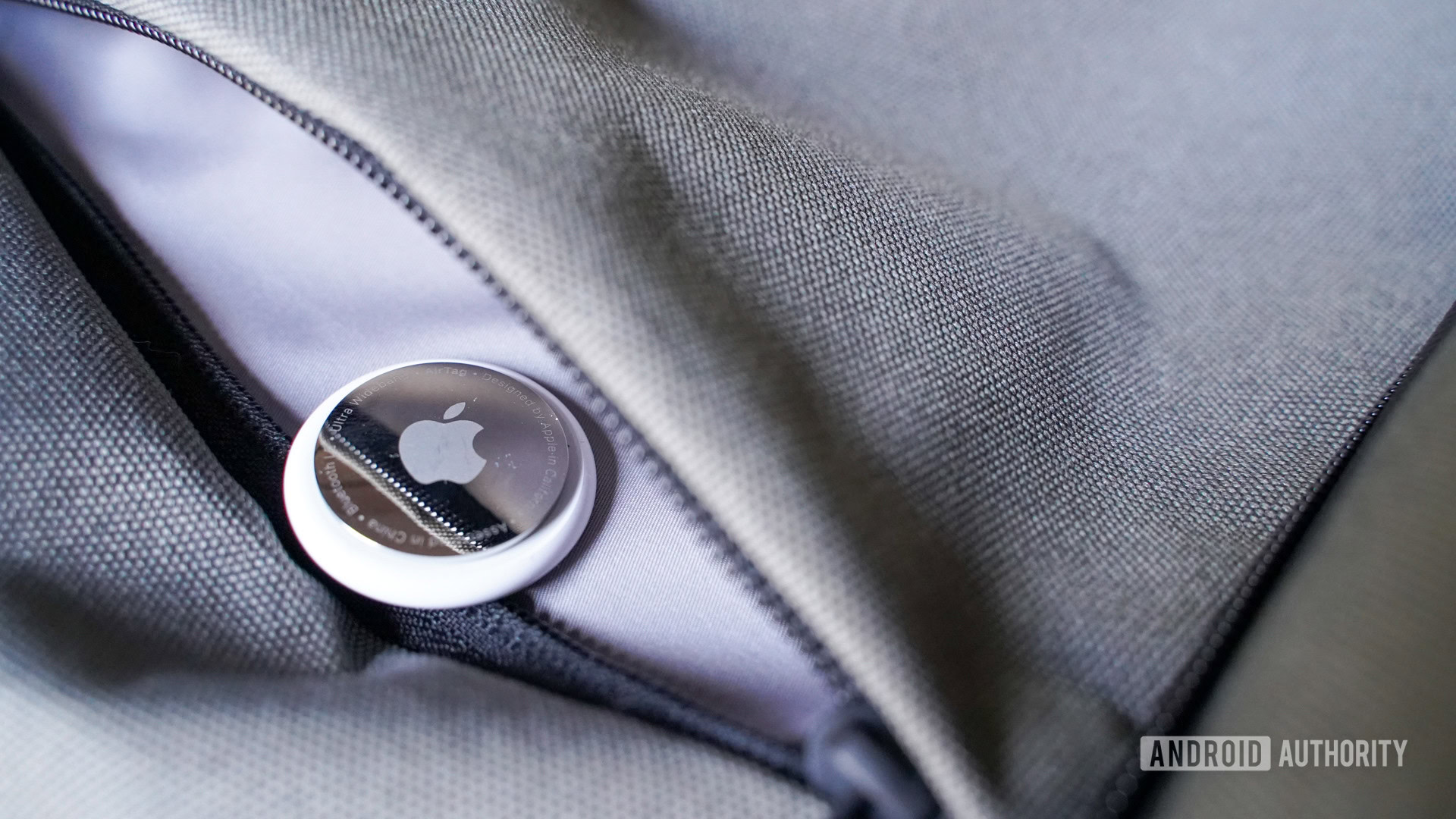
All smart tag devices share a potential for abuse. To Apple’s credit, it has done more than Tile and Samsung to protect user privacy. Still, AirTags aren’t perfect, and there’s room for them to be misused in certain cases.
Apple says the Bluetooth and ultra-wideband connection between the AirTag and your iOS devices is anonymous and encrypted to protect your privacy. Only you can view the location of your registered AirTag, and location data is not stored on the AirTag directly. Devices in the Find My network that relay AirTag location to the cloud remain anonymous, which means you can’t tell who’s sharing the location data with you. Not even Apple knows the location of AirTags nor to whom they belong. In other words, if you’re the owner of an AirTag, your location is protected.
However, these privacy controls can be circumvented. It’s too easy for someone with ill intent to slip an AirTag into your bag, coat pocket, or car to track you.
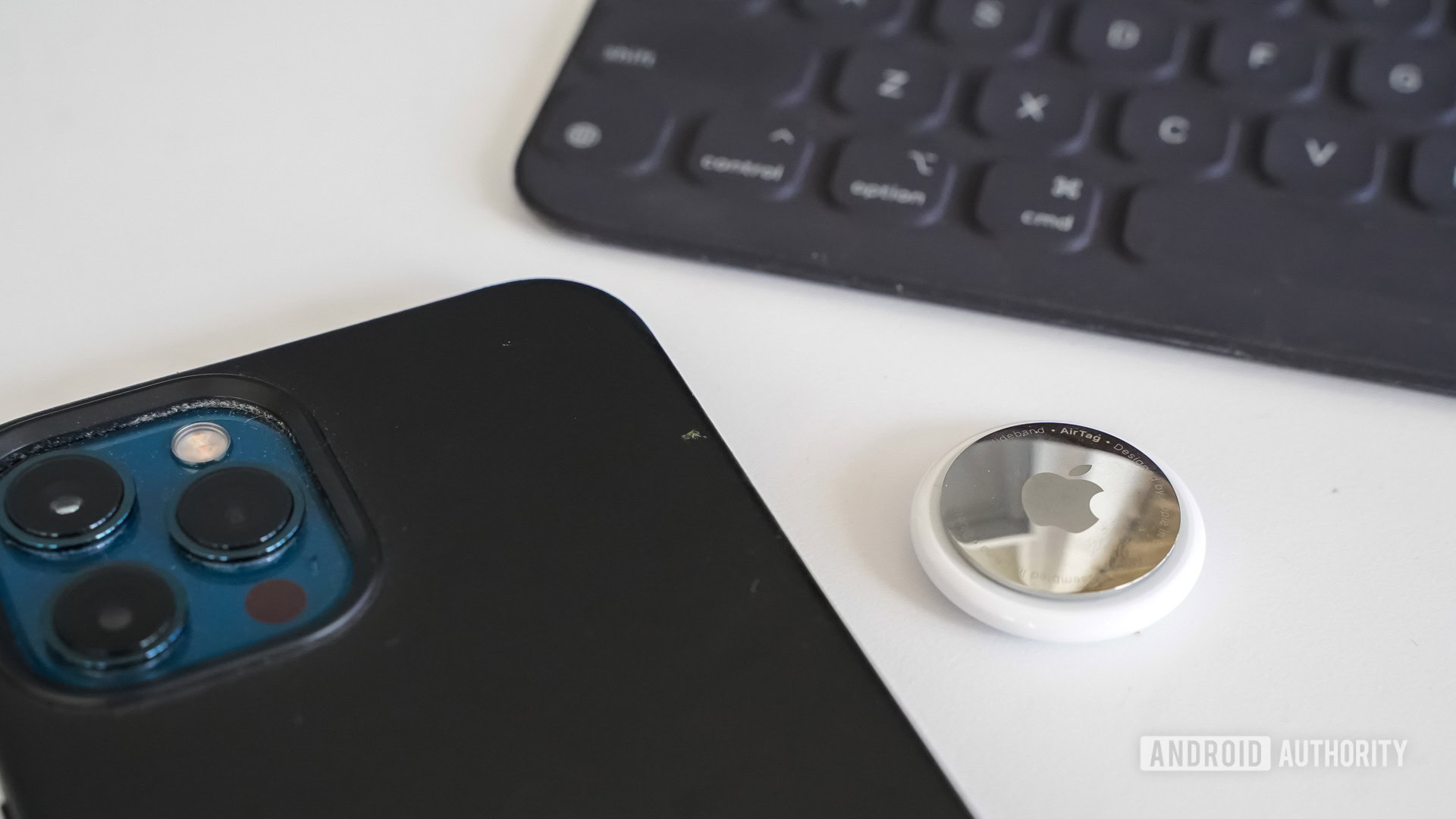
There are several safety protocols built-in. The first applies to iPhones and Android phones alike. When a tag has been separated from its owner it emits a beep so you know it’s there. Apple originally chose a 3-day separation period before requiring AirTags to emit this alert, but has since reduced it to 8 to 24 hours. This new window is much shorter, but is still long enough that it could potentially allow someone to track you for up to a full day before you’re alerted via sound. What’s more, the tag only beeps for a limited time. If the tag happens to beep when you’re not around (like when you’re not in your car, or when you’re in the shower), you’ll be none the wiser.
Anyone without an iPhone won't be alerted to the presence of an unregistered AirTag for 8 to 24 hours.
The second safety protocol is more proactive. People who own an iPhone 6S or newer (and are running iOS 14.5 or later) will receive a pop-up notification on their iPhone when it senses an unregistered AirTag nearby that isn’t with its associated owner. If you’re with a friend who has tagged their backpack, for example, that AirTag won’t bother you.
The “AirTag Found Moving With You” notification only appears once a tag has been separated from its owner for a certain period of time, at most within several hours. If you tap the notification, it takes you to the Find My app, where you’ll see your location history as reported by the AirTag. Once you discover a rogue tag, you can easily disable it by removing the battery, something Apple provides directions for.
Android owners aren’t privy to these notifications. The only warning they get automatically is the beep, which as noted doesn’t happen for 8 to 24 hours. Android users who suspect they’re being tracked can take a more proactive approach by downloading an official AirTag app for Android called Tracker Detect. It’s certainly a step in the right direction, but it still requires people to have an otherwise redundant app on their phones. It doesn’t scan in the background, either, so you have to trigger searches manually.
In February 2022, Apple announced further efforts to reduce the likelihood that AirTags will be used maliciously. It’s now displaying a stark warning during setup that spells out how AirTags are allowed to be used, and makes it clear that using them to track people without their knowledge could be criminal. More importantly, Apple is offering better tools to help quickly locate and disable unwanted AirTags. It’s displaying alerts on more devices (iPads, Watches, etc.), and making sure AirTags with disabled audio alerts are easier to find using Bluetooth and UWB. Lastly, Apple has boosted the volume of chirps when an AirTag is separated from its owner.
Determined stalkers may still be able to get around barriers in some instances. But since Tile and Samsung have been playing catch-up, Apple is probably the best way to go if privacy is paramount.
Value and competition

Pricing is fair. At $29 apiece or $99 for four, the AirTag is affordable. It’s particularly cheap if the thing you’re tracking is a high-value item. Tack on $10 or more for a keyring attachment, though, and pricing starts to angle upward.
Tile’s tags are right around the same $30 mark and are also available in packs and various form factors. Tile sells a basic tag, the Tile Mate (2022) ($24) which supports a keychain, as well as the Tile Sticker (2022) ($29) and the credit card-shaped Tile Slim ($34) for finding even smaller items. There’s also the Tile Pro (2022) ($34) which is even hardier. Tile relies on Bluetooth for nearby lost items and its own Tile Network (plus Amazon Sidewalk in the US) — which pales in size when compared to Apple’s Find My network — to help with items that are further away. Apple has the network advantage here by a significant margin, though Tile’s tags work with both iOS and Android.
Samsung’s Galaxy SmartTags ($24) and SmartTags Plus ($40) are similar to the AirTag and Tile trackers in that they rely on Bluetooth and an anonymized network for tracking items built on any Samsung device with the SmartThings app installed. SmartTags are available at a discount if you buy them in packs. The Plus tags also support UWB for accurate tracking.
Where Tile’s tags works with Android, iOS, and Windows, Apple AirTags work only natively with iOS and iPadOS devices. Meanwhile, Samsung Galaxy SmartTags only work with Galaxy smartphones.
See also: The best Apple AirTag alternatives
Apple AirTag review: The verdict
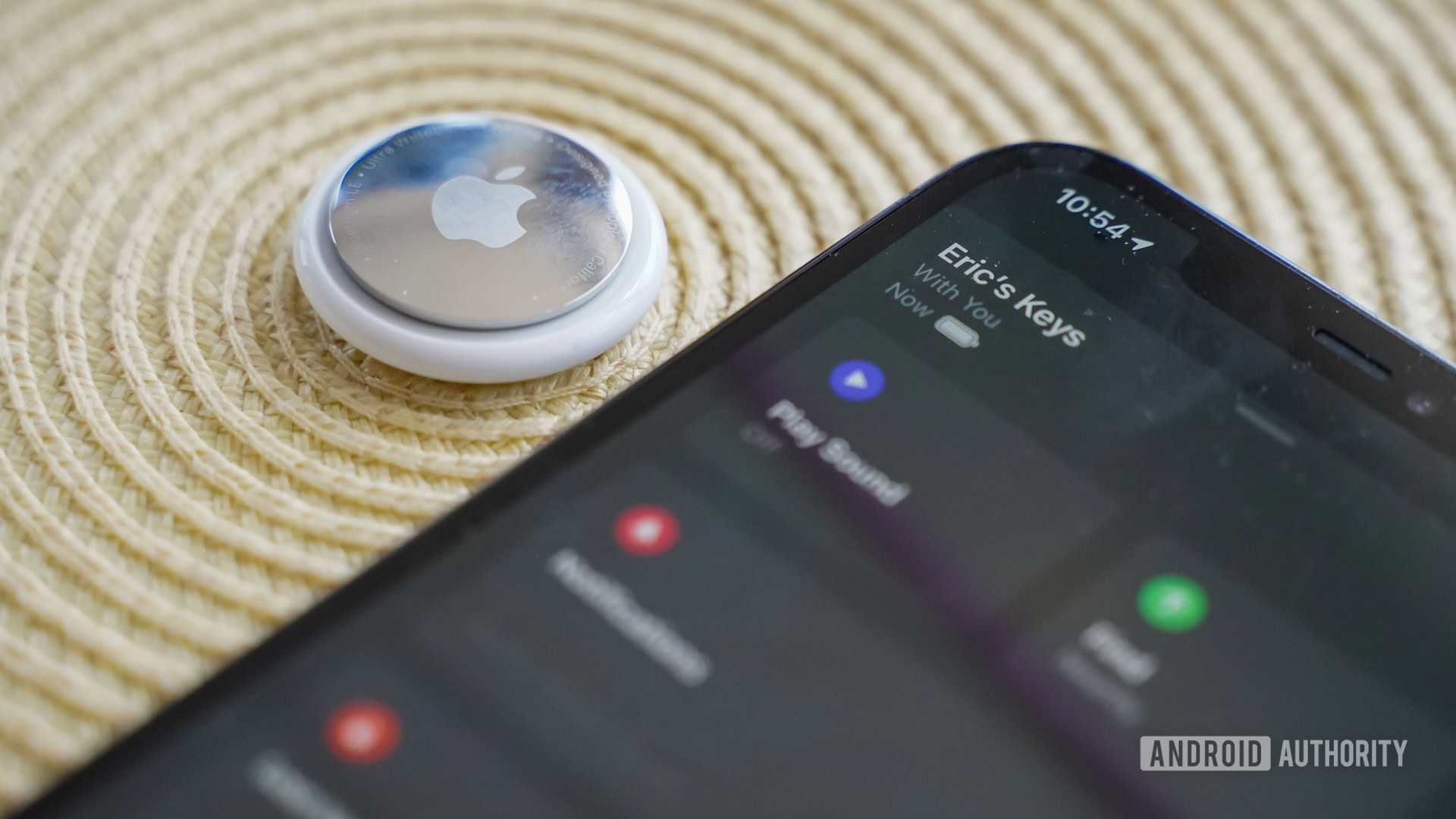
When used for its intended purpose, the Apple AirTag is an amazingly effective product for finding lost items. Around your house, it can be an essential time-saver in help finding lost keys, bags, or other vital items. It locates your missing stuff quickly, audibly, and precisely. Moreover, the strength of Apple’s Find My network means lost AirTags (and the attached stuff!) can be located from many miles away just as easily as around your home. These products are a no-brainer purchase for iPhone owners who want to keep tabs on their valuables or essentials.
Since you often can't put a price tag on losing something, the Apple AirTag is a priceless purchase — if you've got an iPhone.
Bottom line, if you’re an iPhone or iPad owner and want the best way to track down lost gear, the Apple AirTag is the best option for you.